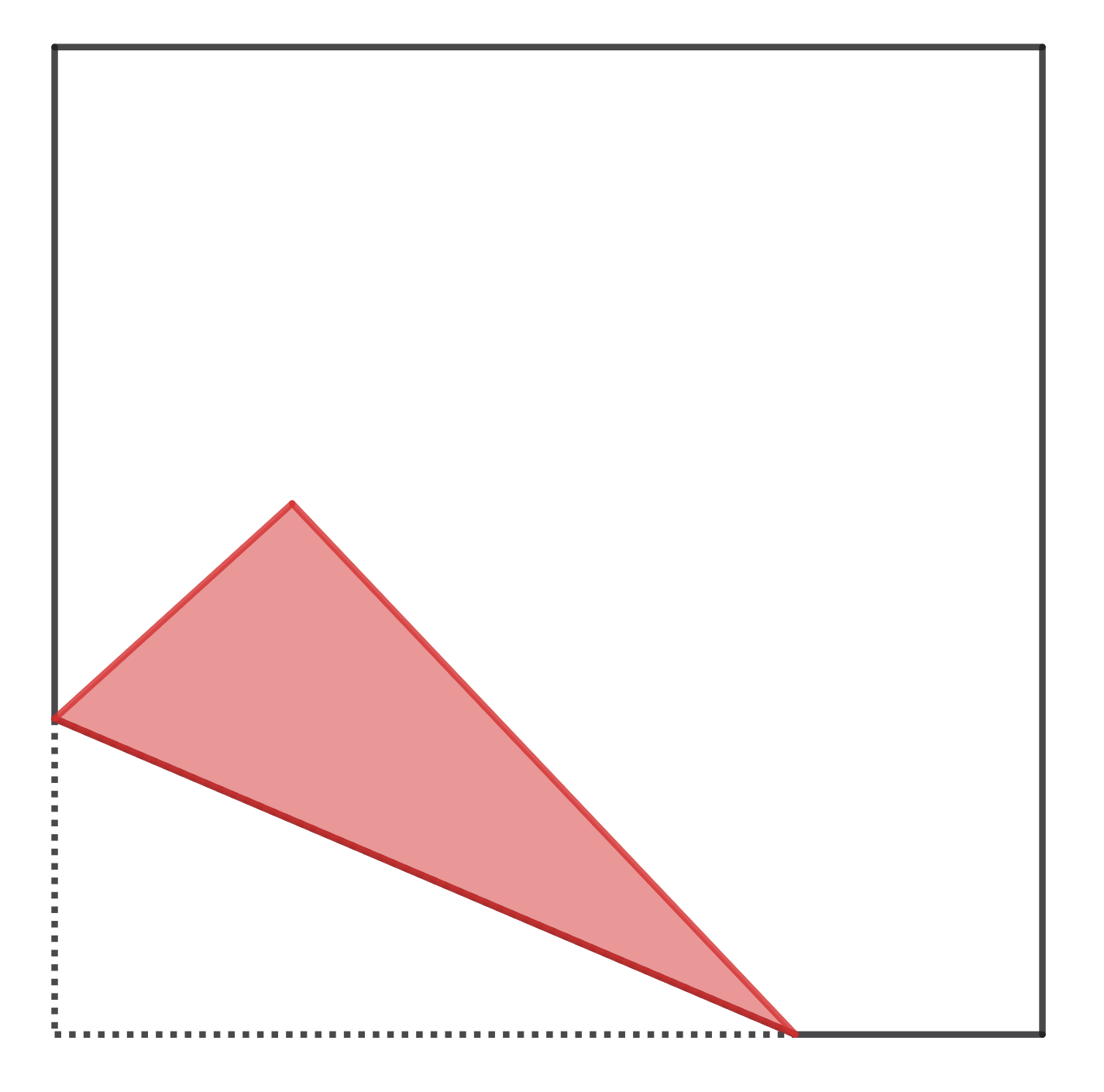Problems
The length of the hypotenuse of a right-angled triangle is 3.
a) The Scattered Scientist calculated the dispersion of the lengths of the sides of this triangle and found that it equals 2. Was he wrong in the calculations?
b) What is the smallest standard deviation of the sides that a rectangular triangle can have? What are the lengths of its sides, adjacent to the right angle?
The upper side of a piece of square paper is white, and the lower one is red. In the square, a point F is randomly chosen. Then the square is bent so that one randomly selected vertex overlaps the point F. Find the mathematical expectation of the number of sides of the red polygon that appears.

The bus has \(n\) seats, and all of the tickets are sold to \(n\) passengers. The first to enter the bus is the Scattered Scientist and, without looking at his ticket, takes a random available seat. Following this, the passengers enter one by one. If the new passenger sees that his place is free, he takes his place. If the place is occupied, then the person who gets on the bus takes the first available seat. Find the probability that the passenger who got on the bus last will take his seat according to his ticket?
In a numerical set there is 100 numbers. If you remove one number, the median of the remaining numbers will be 78. If you remove a different number, the median of the remaining numbers is 66. Find the median of the entire set.
In the city where the Scattered Scientist lives, telephone numbers consist of 7 digits. The scientist easily remembers a phone number, if this number is a palindrome, that is, it is identical when read from left to right and from right to left. For example, the number 4435344 the scientist remembers easily, because this number is a palindrome. And the number 3723627 is not a palindrome, so the scientist does not remember this number easily. Find the probability that the scientist will remember the phone number of a new random acquaintance easily.
40% of adherents of some political party are women. 70% of the adherents of this party are townspeople. At the same time, 60% of the townspeople who support the party are men. Are the events “the adherent of the party is a townsperson” and “the adherent of party is a woman” independent?
The Scattered Scientist constructed a device consisting of a sensor and a transmitter. The average life expectancy of the sensor part is 3 years, the average lifetime of the transmitter is 5 years. Knowing the distribution of the lifetime of the sensor and the transmitter, the Scattered Scientist calculated that the average lifetime of the entire device is 3 years 8 months. Was the Scattered Scientist wrong in his calculations?
The television game “What? Where? When?” consists of a team of “experts” trying to solve 13 questions that are thought up and sent in by the viewers of the programme. Envelopes with the questions are selected in turn in random order with the help of a spinning top with an arrow. If the experts answer correctly, they earn a point, and if they answer incorrectly, the viewers get one point. The game ends as soon as one of the teams scores 6 points. The probability of the team of experts winning in one round is 0.6 and there can be no draws. Currently, the experts are losing 3 to 4. Find the probability that the experts will still win.
Anna is waiting for the bus. Which event is most likely?
\(A =\{\)Anna waits for the bus for at least a minute\(\}\),
\(B = \{\)Anna waits for the bus for at least two minutes\(\}\),
\(C = \{\)Anna waits for the bus for at least five minutes\(\}\).
In the set \(-5\), \(-4\), \(-3\), \(-2\), \(-1\), \(0\), \(1\), \(2\), \(3\), \(4\), \(5\), replace one number with two other integers so that the set variance and its mean remain unchanged.